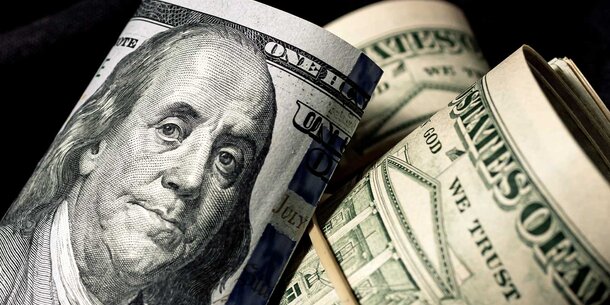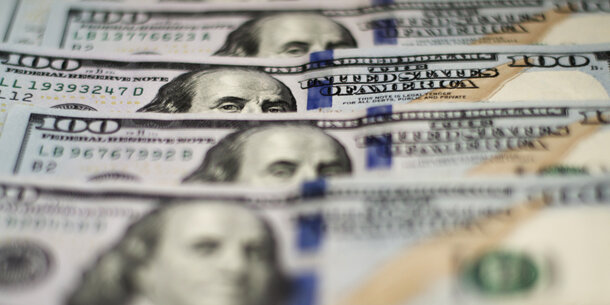Big money is already flowing into marquee 2025 state elections. New Jersey and Virginia will elect new governors, and each may have their most expensive election yet. Big money has already been spent on both sides, including from out of state.
Both states tend to lean Democrat electorally, and so far spending heavily favors the Democratic candidates. Still, there is a long way to go until November and big independent expenditures tend to come late, so GOP boosters may catch up. In addition, high spending can’t guarantee a win, as the June mayoral primary in New York City illustrated when the biggest super PAC in the city’s history raised $25 million in a failed attempt to help former Gov. Andrew Cuomo win the Democratic primary.
Nevertheless, big-spending interests are trying to influence the New Jersey and Virginia elections, and, by extension, policy in state governments. Whoever wins in each state, megadonors and special interest spending will have been behind them.
Virginia
Both candidates in Virginia’s gubernatorial race have attracted big money. Democratic U.S. Rep. Abigail Spanberger has raised $27 million and Republican Lt. Gov. Winsome Earle-Sears has raised $12 million. Early fundraising places the contest on track to be one of the most expensive in Virginia history. Spanberger has raised more than any prior candidate by this point in the election cycle. And with partisan control of the state legislature at stake, other races may heat up. Unlike most states, Virginia does not limit the amount that donors can give to candidates, so many big donations go directly to them instead of super PACs. Campaign donations are fully disclosed, though the state publishes the data in a way that makes it difficult to track how the money flows.
The largest contributions indicate energy is a key issue: Earle-Sears has secured big donations from the state’s energy industry, while at least one prominent industry critic has given to Spanberger.
Spanberger’s biggest donor by far is the Democratic Governors Association, which gave her campaign $2 million already and announced “an initial investment of $5 million” to support her. National liberal group VoteVets gave her almost $523,000, and Illinois health tech entrepreneur Glen Tullman gave $500,000. Another $465,000 came from the Clean Virginia Fund, an organization that opposes energy utility influence in the state and is funded by investor Michael Bills.
Earle-Sears’s biggest contribution so far is $500,000 from the Republican Governors Association. She also received $300,000 from billionaire investor Thomas Peterffy of Florida and $260,000 from Virginia utility company Dominion Energy. Elizabeth Uihlein, Illinois packing company owner and megadonor to conservative causes including election denial, gave $250,000 through Winsome PAC, which transferred all its money to the campaign. Virginia coal magnate Richard Baxter Gilliam gave Earle-Sears another $200,000.
New Jersey
In New Jersey’s governor race, primary voters nominated Republican former state Rep. Jack Ciattarelli and Democratic U.S. Rep. Mikie Sherrill in June. With $122 million spent on the primary, the election is on track to be the most expensive election in state history.
The candidates are essentially tied in campaign fundraising at just over $9 million, due to the rules of the state’s public financing program. Independent group funding, on the other hand, appears to be almost 14 to 1 in Sherrill’s favor so far.
Labor and national party affiliates have made big investments on the Democrat’s side, as have dark money groups that conceal their donors. Notably, ride share giant Uber and Garden State Success, an educational advocacy group with major funding from an Oregon dark money organization, appear to have spent significant amounts to support both Ciattarelli and Sherrill during their primaries.
In Sherrill’s corner, the Democratic Governors Association announced $20 million in ad buys. The single-candidate super PAC boosting Sherrill, One Giant Leap PAC, has raised $7.8 million. A little over $1 million came from the Laborers International Union.
Much of One Giant Leap’s funding, more than $1 million, comes from groups that have kept their sources fully or partially secret. Two groups, Stand Together NJ and One Giant Leap Action Fund list their address as the same P.O. box in Purcellville, Virginia, and together gave more than $660,000. Neither has disclosed their donors, although one source reported that Uber provided $500,000 to Stand Together NJ. Another One Giant Leap donor with undisclosed funding and a Virginia P.O. box, Servant-Leader Fund, gave $300,000. Garden State Success gave $160,000.
The pro-Ciattarelli super PAC, which recently changed its name from Kitchen Table Conservatives to Change NJ, has raised $2 million. Its largest donation is $500,000 from a PAC funded by Uber. Its other biggest donations include $100,000 from former Reebok CEO Paul Fireman and $90,000 from Garden State Success, in addition to various New Jersey business interests.
As noted, interests looking to influence these races still have months to spend money on the races, and whether and how the candidates will further pursue big-money support remains to be seen. But clearly the trend we’ve seen in federal races continues to characterize big state races: Election spending levels are steeply rising, driven by large amounts from a rarified donor class.



